
Roots
Consider a single strand, born from the depths of being, a testament to ancestry. What stories does it hold? What whispers of ancient earth and sun-drenched rituals dwell within its very coil? For generations, across continents and through ages, textured hair has carried the wisdom of its people.
Its unique architecture, often a testament to resilience against arid winds and blazing sun, found allies in the rich bounty of the earth ❉ plant oils. These golden elixirs, pressed from seeds, fruits, and nuts, were not simply treatments; they were extensions of a living heritage, a tangible link to ancestral practices and a profound respect for the body’s connection to nature. Each drop carried the memory of hands that cultivated, prepared, and applied them, a continuum stretching back to the dawn of human hair care.
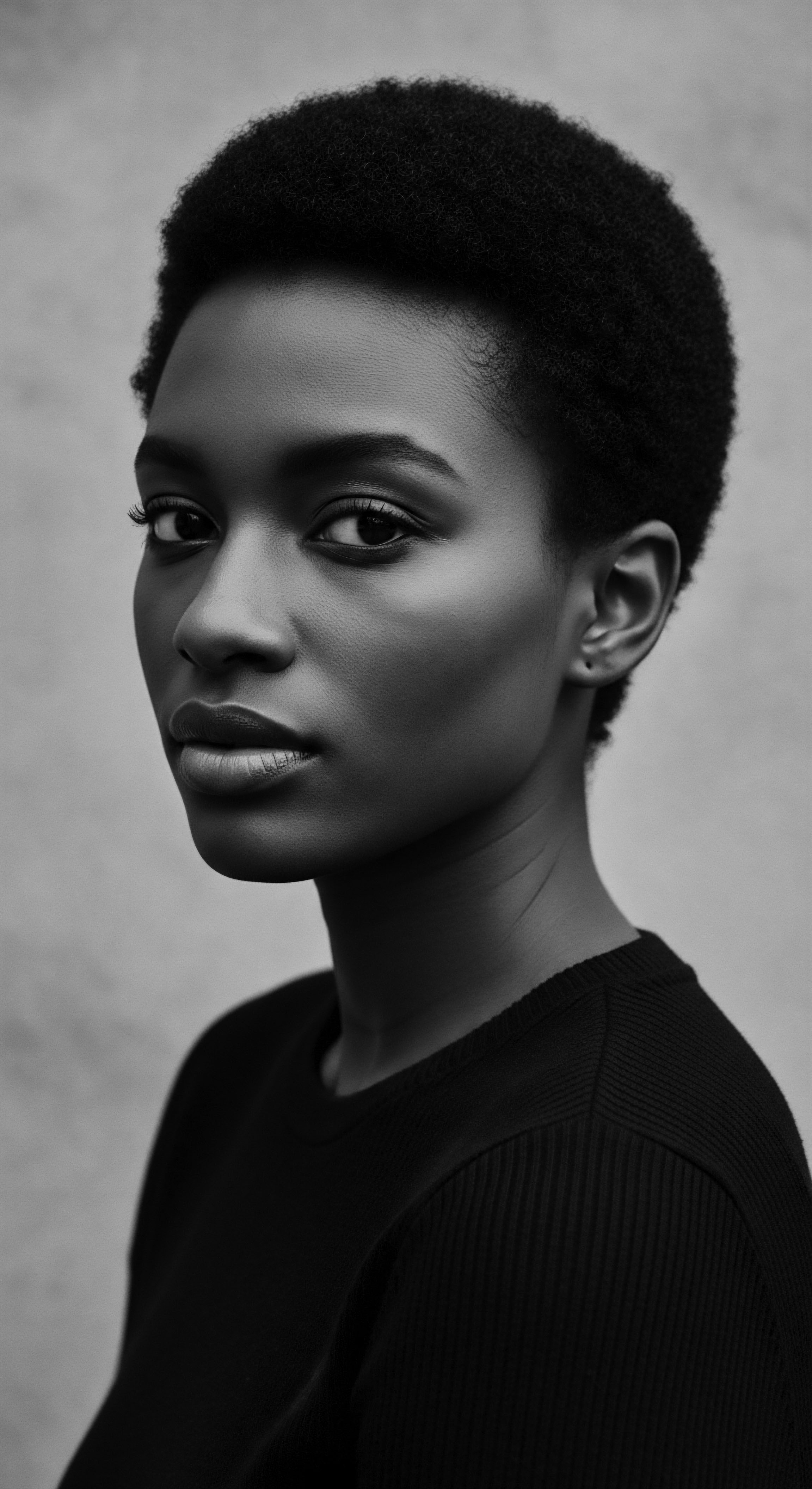
Ancient Alchemy ❉ Early Extractions and Their Purpose
The earliest records of human ingenuity speak of a keen observation of nature. Communities across Africa, the Americas, and the Caribbean understood deeply the properties of the plant life surrounding them. They discovered that certain seeds and fruits, when pressed or boiled, yielded liquid gold – oils capable of protecting, strengthening, and enhancing their hair. This was not a casual discovery; it was a sophisticated alchemy born of necessity and wisdom.
These early extractions addressed core needs ❉ shielding hair from environmental damage, providing slip for intricate styling, and nourishing the scalp. The very process of obtaining these oils was often a communal endeavor, especially among women, reinforcing social bonds and transmitting knowledge across generations.
In West Africa, the shea tree (Vitellaria paradoxa), often called the ‘tree of life,’ provided its nourishing butter for thousands of years. Its processing involved an arduous, precise method of harvesting, washing, and preparing the nuts, followed by oil extraction (Healthline, 2018). This butter became a staple for hair and skin, documented as far back as the 14th century, but its usage certainly extends much further into antiquity. Similarly, in ancient Egypt, the use of natural oils was well-established.
Moringa oil, valued for its light feel and rich antioxidant content, along with pomegranate oil, were prized for nourishing the scalp, promoting growth, and adding shine, especially effective against the harsh desert climate (Egyptra Travel Services, 2025). Castor oil and honey were also primary components of Egyptian hair rituals (Global Beauty Secrets, 2022).
Plant oils provided protection, detangling, and nourishment for textured hair, linking ancestral methods to modern needs.

The Coil’s Chemistry and Oils ❉ What Did Our Ancestors Discern?
Textured hair, with its unique helical structure, presents particular needs for moisture retention and lubrication. The twists and turns along a strand make it more prone to dryness and breakage as natural sebum struggles to travel down the hair shaft (Healthline, 2018). Our ancestors, without microscopes or chemical analysis, understood this intuitively. They observed that oils provided a protective coating, reduced friction during styling, and brought a healthy sheen to the hair.
This empirical knowledge, honed over millennia, recognized the immediate benefits of plant oils for hair that often grew upwards and outwards, defying gravity. They saw that oiled hair was more manageable, less prone to tangles, and possessed a radiant vitality.
The practices of the Basara Tribe of Chad, applying their Chebe mixture (an herb-infused oil or animal fat) weekly to braided hair for length retention, offer an illuminating example of this deep understanding (Reddit, 2021). The Himba Tribe of Namibia, coating their hair in red clay mixed with butter, also demonstrates a similar mastery of natural elements for hair conditioning and protection (Reddit, 2021; Sister Sky, 2023). These are not merely superficial customs; they are sophisticated approaches rooted in centuries of careful observation and collective knowledge concerning the particular needs of highly textured hair.

Hair Anatomy and Physiology Specific to Textured Hair ❉ Echoes from the Source
The remarkable variances in human hair texture, particularly the intricate curls and coils seen in Black and mixed-race hair, pose distinct requirements for care. Each strand of highly coiled hair features points where the cuticle layers lift, making it more susceptible to moisture loss and external damage. Plant oils, with their lipid profiles, act as formidable allies against these challenges.
Consider the hair shaft itself ❉ a complex structure comprising the medulla, cortex, and cuticle. For textured hair, the cuticle, the outermost layer, often lies less smoothly than on straight hair. This structure allows moisture to escape more readily and makes the hair more prone to tangling and breakage (Healthline, 2018).
Plant oils, rich in fatty acids, function by laying down a protective film on the cuticle, smoothing its surface and helping to seal in hydration. This physical barrier reduces the impact of environmental factors and mechanical stress from styling.
The traditional knowledge of hair porosity, though not termed as such, was inherently understood. Those with hair that felt dry or absorbed water quickly would intuitively choose thicker, heavier oils or butters to provide a greater sealant effect. Conversely, lighter oils might have been used for hair that felt easily weighed down or had a natural sheen. This ancestral wisdom often aligns with modern trichological understanding of how various oils interact with different hair porosities.
- Shea Butter ❉ Known for its deep hydration, sealing moisture, and softening effects, highly beneficial for dry, curly, or textured hair types (Clarins, 2020). Its fatty acids create a protective barrier (Dr. Axe, 2022).
- Coconut Oil ❉ A favored deep hydrator, its fatty acids penetrate hair shafts, offering intense conditioning and antioxidant properties that combat scalp inflammation (Afriklens, 2023; Cécred, 2025).
- Castor Oil ❉ A powerhouse of hydration, historically used in ancient Egypt to maintain healthy hair growth and strength (Global Beauty Secrets, 2022; Healthline, 2018). It is known to boost circulation to the scalp (YouTube, 2025).

The Essential Lexicon of Textured Hair ❉ A Vocabulary of Care
Throughout history, communities developed specific terms and practices around textured hair. These terms, steeped in cultural context, describe hair types, styling methods, and the ingredients used. The language itself reflects a communal ownership of hair knowledge.
In many African cultures, hair was a powerful marker of identity, signifying status, age, marital status, and even spiritual connection (Odele Beauty, 2021; Omez Beauty Products, 2024). The care practices, including oiling, were woven into the very fabric of social life.
The careful application of plant oils was a consistent element in these rituals. Terms might have described not only the oil itself, but also the specific method of its extraction, its aroma, its particular textural feel on the hair, or its effect within a given hairstyle. This rich vocabulary goes beyond simple description; it conveys a respect for the ingredient and the art of its application.
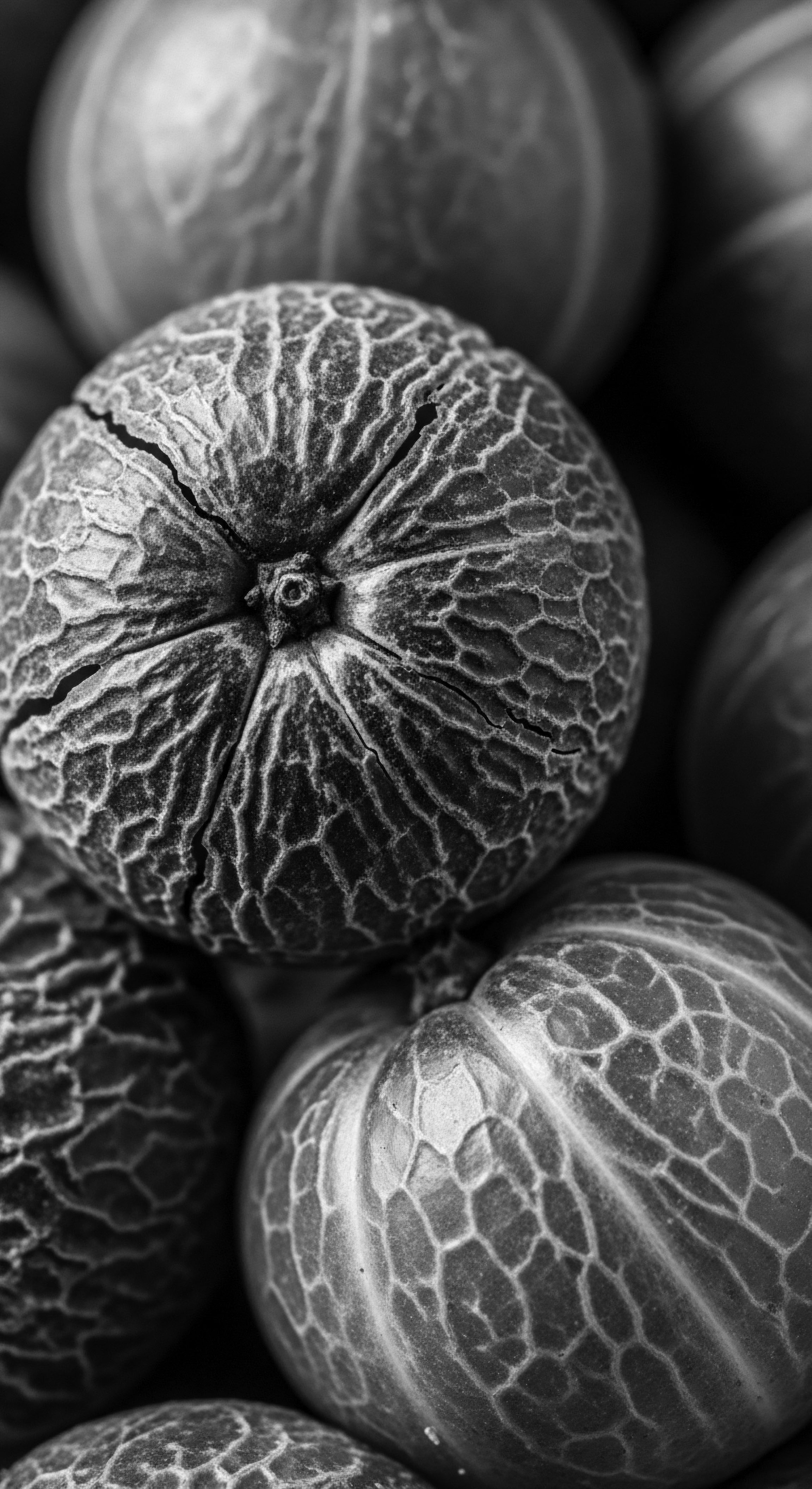
Ritual
The application of plant oils to textured hair has always transcended mere cosmetic function. It forms a cornerstone of ritual, a deliberate act of care that binds individuals to their ancestors and to the earth. These acts were not performed in haste; they were often meditative, communal, and imbued with meaning, reflecting a deep respect for hair as a living crown.
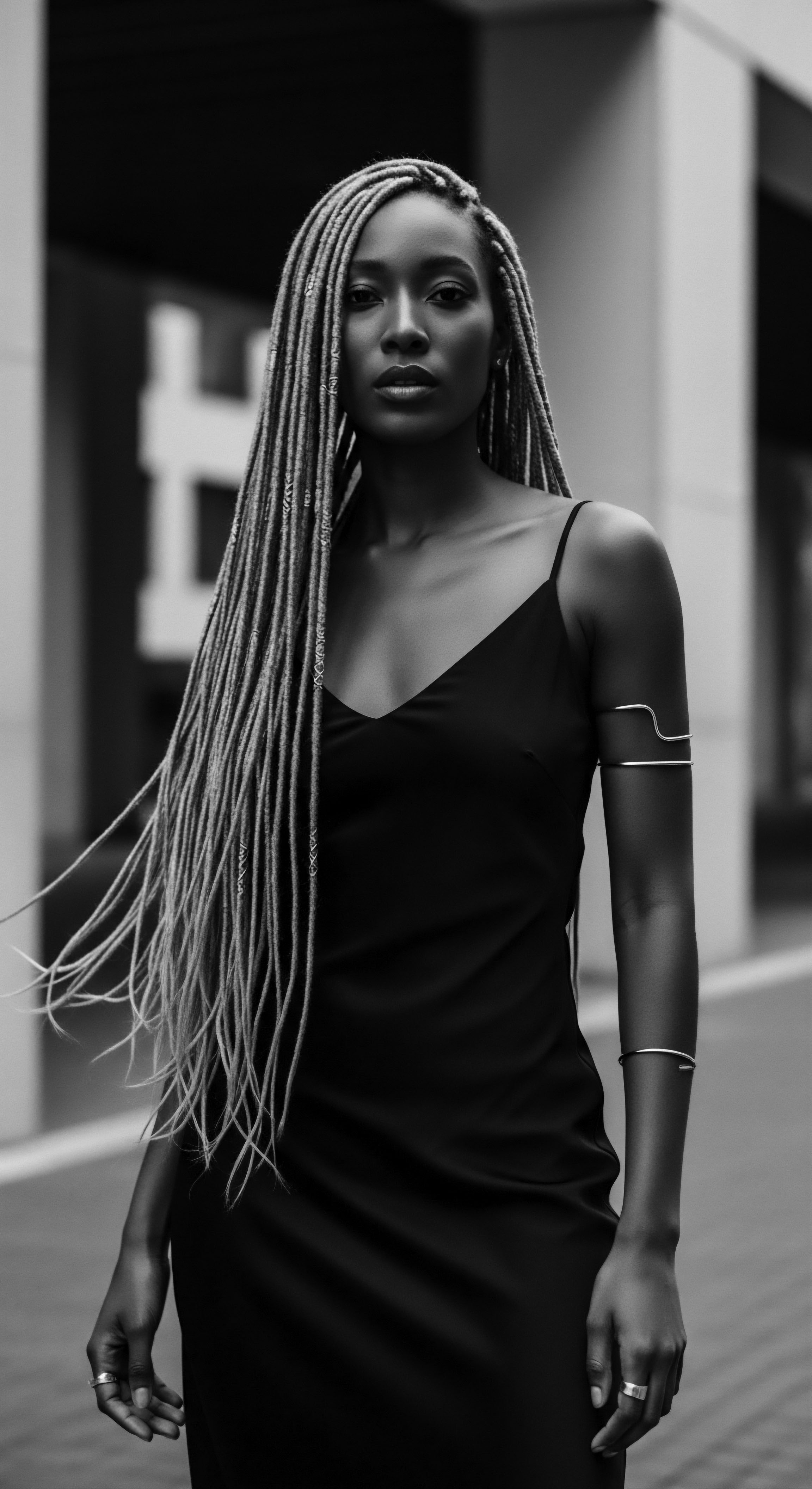
The Art of Anointing ❉ Ceremonial Uses of Oils
From West Africa to the Indigenous communities of the Americas, plant oils played a central part in ceremonial practices. Hair, as the most elevated part of the body, was often considered a channel for spiritual connection (Odele Beauty, 2021). The anointing of hair with specially prepared oils or butters was a sacred rite, used in rites of passage, before significant events, or as an offering. These rituals underscored the spiritual and social value placed upon hair, particularly within African societies where intricate hairstyles conveyed messages about one’s status, tribe, or religious beliefs (Omez Beauty Products, 2024).
For the Miskito people of Central America, Batana Oil, extracted from the American palm tree, has been a cherished natural remedy for generations, applied to both hair and skin (Sister Sky, 2023; Cécred, 2025). Its preparation through boiling and drying palm nuts and manual extraction of the amber-colored oil itself constitutes a ritual passed down through ancestral lines (Sister Sky, 2023). Similarly, Native Hawaiians used Kukui Nut Oil for centuries, not only to protect skin and hair from the harsh sun and winds but also in their broader cultural practices, associating the Kukui tree with protection and renewal (Naturally Balmy, 2023; ARgENTUM, 2023). This intertwining of practical application with spiritual significance solidifies the role of plant oils in textured hair heritage.

Protective Traditions ❉ Oils in Styling Practices
The very nature of textured hair, prone to dryness and tangles, made protective styling an essential practice for health and length retention long before modern terminology existed (Reddit, 2021). Plant oils provided the slip and sealing qualities necessary to create and maintain these styles. Braiding, threading, and twisting, practiced for thousands of years, relied on oils to lubricate the strands, minimize breakage during manipulation, and keep moisture locked within the hair shaft (ELLE, 2020; Odele Beauty, 2021).
The longevity of many traditional textured hairstyles, some lasting weeks, was directly linked to the careful preparation of the hair with oils. This allowed styles like cornrows, Fulani braids, and Bantu knots – all with origins deeply embedded in African history – to not only be aesthetically pleasing but also functional in preserving hair health over time (Afriklens, 2024). The oils helped to keep the hair supple, preventing the brittleness that can lead to snapping.
The communal act of hair oiling reinforces identity, transferring ancestral practices across generations.

From Ancient Blends to Modern Preparations ❉ How Did Oil Application Evolve?
The evolution of oil application reflects both cultural shifts and adaptations to new environments. In pre-colonial Africa, communities crafted elaborate blends of plant oils with herbs, clays, and sometimes animal fats, each serving a particular purpose (Reddit, 2021; MDPI, 2023). The specific plant families like Lamiaceae, Asteraceae, and Fabaceae were widely utilized for their cosmetical properties, often yielding essential oils (MDPI, 2023).
With the transatlantic slave trade and forced migration, enslaved Africans were stripped of their ancestral tools and ingredients. Yet, their ingenuity persisted. They used whatever was available—bacon grease, butter, kerosene—as makeshift conditioners, a testament to their resilience and determination to care for their hair even under unimaginable hardship (Odele Beauty, 2021). This adaptation, though born of trauma, continued the tradition of using fatty substances for hair care.
Today, while commercial products abound, the ancestral knowledge of oil application persists. Many contemporary textured hair care routines echo these historical practices, emphasizing pre-shampoo treatments, deep conditioning with oils, and sealing moisture into the hair. The core principles of nourishment and protection, passed down through generations, remain relevant.
| Oil/Butter Shea Butter |
| Traditional Origin/Use West Africa, used for thousands of years for skin and hair protection from elements, moisture retention (Healthline, 2018). |
| Contemporary Application & Benefit Deep conditioning, sealant for moisture, anti-inflammatory for scalp, promotes softness and shine (Dr. Axe, 2022; Holy Curls, 2021). |
| Oil/Butter Moringa Oil |
| Traditional Origin/Use Ancient Egypt, valued for lightweight texture, antioxidants, scalp nourishment (Egyptra Travel Services, 2025). |
| Contemporary Application & Benefit Nourishing, promotes hair growth, maintains overall health, often found in modern 'Ancient Egyptian' blends (Sally Beauty, 2023). |
| Oil/Butter Kukui Nut Oil |
| Traditional Origin/Use Native Hawaiians, used for centuries to protect hair and skin from sun, salt water, and wind (Naturally Balmy, 2023). |
| Contemporary Application & Benefit Adds suppleness to dry hair, non-comedogenic scalp treatment, detangles and reduces frizz (Naturally Balmy, 2023). |
| Oil/Butter Baobab Oil |
| Traditional Origin/Use Traditional African pharmacopeia, known as the 'Tree of Life,' used for various medicinal purposes and hair health (Prose, 2022). |
| Contemporary Application & Benefit Strengthens hair fibers, locks in moisture, anti-inflammatory for scalp, aids in frizz control (Prose, 2022; O&3, 2024). |
| Oil/Butter These oils represent a fraction of the historical plant-based remedies, their enduring use a testament to ancestral wisdom. |

Tools of Tenderness ❉ Implements and Their Oil Connection
The hands that applied the oils were often the most primary tools, but other implements also played a part. Combs, initially crafted from wood, bone, or natural fibers, were used to distribute oils evenly and detangle hair gently (Salford Students’ Union, 2024). The broad teeth of some traditional combs were particularly effective for navigating coils without causing damage, especially when hair was softened and made pliable with oils.
For specific styles or treatments, specialized tools might have been employed. The practice of African threading, for instance, used thread alongside oils to stretch and protect hair, preparing it for various styles or simply aiding in length retention (Sellox Blog, 2021). These tools, humble in their appearance, were powerful extensions of the hair care ritual, working in concert with plant oils to achieve desired results.

Oil’s Role in Scalp Wellness ❉ A Historical View
Beyond the hair strands themselves, the health of the scalp was paramount in ancestral hair care. A healthy scalp is the foundation for strong hair growth (Dr. Axe, 2022). Plant oils were regularly massaged into the scalp not only for their moisturizing properties but also for their believed medicinal benefits.
They were used to soothe irritation, address dryness, and combat common concerns like flaking or discomfort (Cécred, 2025; Dr. Axe, 2022).
The traditional Ayurvedic practice of daily oiling in South Asia, for instance, deeply informed global understanding of scalp care. It was a ritual not only to rejuvenate and maintain hair but also to enhance spiritual wellbeing through the absorption of plant essences via the scalp (Cécred, 2025; Cécred, 2025). While distinct from African traditions, this mirrors a universal recognition of the scalp as a living entity that requires thoughtful nourishment, a practice echoed in the application of coconut oil and rosemary oil in African curly hair care today for their anti-inflammatory and detoxifying properties (Afriklens, 2023). This centuries-old wisdom precedes modern dermatological understanding, yet often aligns with it, validating the ancestral practices.

Relay
The story of plant oils and textured hair is a relay race through time, with each generation passing on the wisdom, adapting it, and adding its own insights. This continuity is especially poignant within the context of the African diaspora, where hair care became a powerful act of resistance and cultural preservation.

Echoes of Resilience ❉ Oils in Diasporic Hair Culture
The transatlantic slave trade sought to sever enslaved Africans from their heritage, often by brutally shaving their heads upon arrival in the Americas (Odele Beauty, 2021). This act was a deliberate attempt to strip identity and cultural connection. Yet, despite these atrocities, the tradition of hair care, including the use of plant oils, persisted (Salford Students’ Union, 2024).
Enslaved people, with limited resources, improvised with materials at hand, using natural fats and plant-based concoctions to tend to their hair (Odele Beauty, 2021; Salford Students’ Union, 2024). This tenacity transformed hair care into a quiet, yet profound, act of resilience, a way to hold onto a semblance of self and ancestral memory.
The communal aspect of hair care, where women would gather to braid and oil each other’s hair, continued in secret, fostering bonds and preserving knowledge. This sustained use of oils and butters, often with whatever plant extracts could be found or cultivated, was crucial for managing textured hair in harsh conditions, preventing breakage during laborious work, and maintaining hygiene. These practices formed a counter-narrative to dehumanization, a testament to an enduring spirit.

The Science of Sebum ❉ How Plant Oils Mimic Natural Protection
Modern science now offers validation for ancestral practices. Textured hair often has an elliptical cross-section, and the cuticle scales tend to lift more readily (Dr. Axe, 2022).
This structural reality means natural sebum, the oil produced by the scalp, struggles to travel down the coiled strands as effectively as it does on straight hair. This leads to drier hair lengths and ends.
Plant oils, with their diverse fatty acid profiles, step in to supplement this natural deficiency. For example, Jojoba Oil (Simmondsia chinensis), historically used by Native American communities, is structurally similar to human sebum (Timeless Beauty Secrets, 2023). This biomimicry allows it to be readily accepted by the hair and scalp, providing lubrication and a protective film without causing build-up or greasiness (Timeless Beauty Secrets, 2023).
Other oils like shea butter, rich in oleic and linoleic acids, form a barrier on the hair shaft, sealing in existing moisture and protecting against environmental aggressors, effectively performing the role sebum might struggle to fulfill (Dr. Axe, 2022).
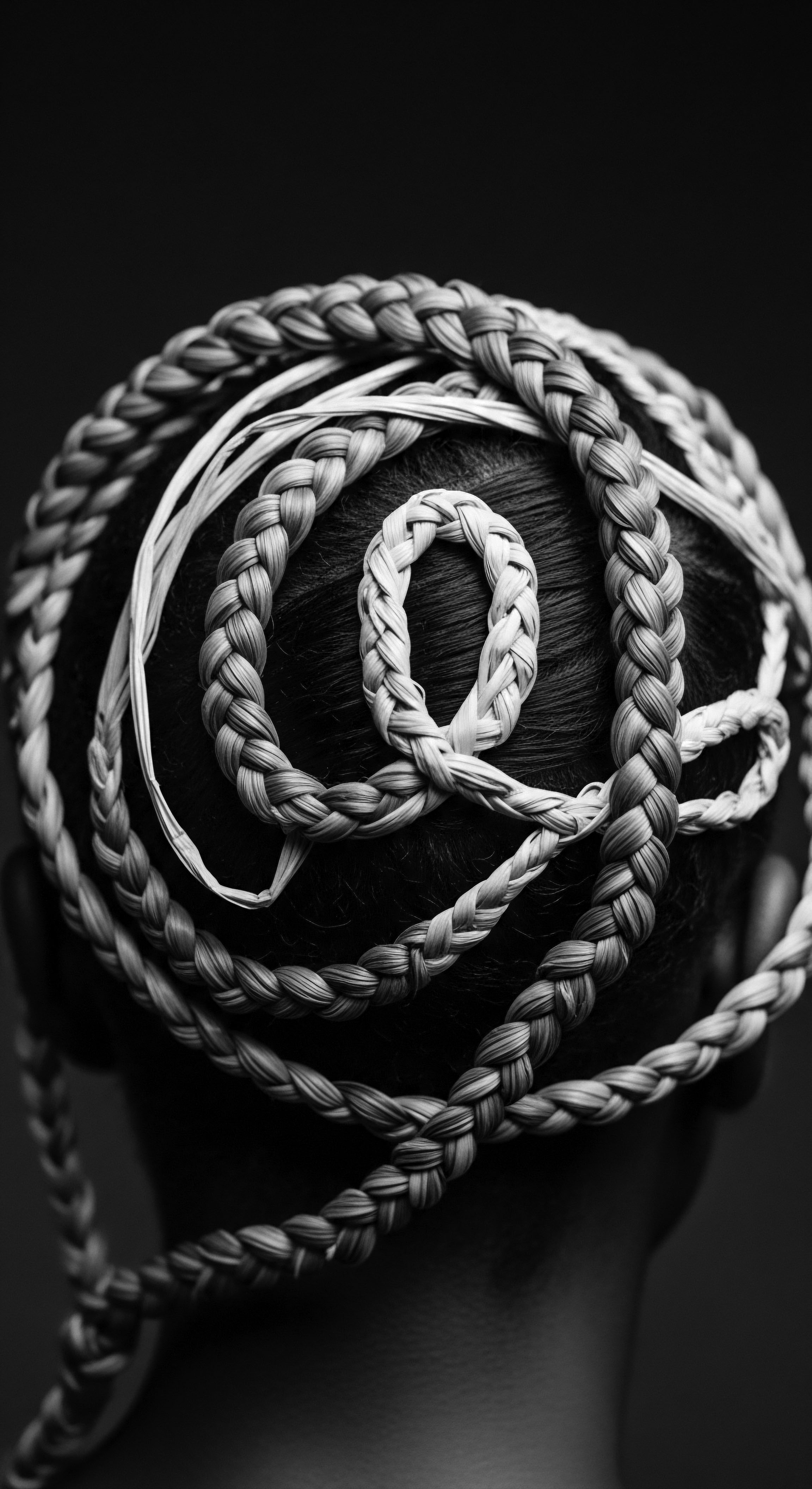
Beyond the Physical ❉ Oil as a Medium of Identity and Connection
The ritual of oiling textured hair extends beyond its physical benefits. It is a dialogue between the individual, their body, and their lineage. This act carries with it the stories of survival, adaptation, and celebration.
In the diaspora, where identity was often challenged, hair became a powerful visual statement. The careful cultivation and adornment of hair, often using oils to enhance its natural qualities, became a source of pride and a political statement against Eurocentric beauty standards (Omez Beauty Products, 2024).
The act of oiling, especially when done within families or communities, becomes a transfer of embodied knowledge and cultural memory. It is a non-verbal affirmation of belonging, a quiet celebration of shared heritage. The scent of a particular oil, the feel of hands working through coils, these sensory experiences become anchored to a collective past and a resilient present.

Ancestral Prescriptions ❉ Plant Oils for Hair Concerns
Ancestral wisdom was a nuanced form of pharmacology, where different plants and their oils were understood to address specific concerns. This went beyond simple moisturization.
- For Scalp Health ❉ Oils with anti-inflammatory or antimicrobial properties, such as Rosemary Oil or Tea Tree Oil, were likely used to address scalp irritation or flaking, even if the underlying mechanisms were not scientifically articulated (Afriklens, 2023; India Today, 2025). The Himba tribe’s use of clay and cow fat mixtures, while not strictly a plant oil, speaks to a broader understanding of scalp protection and health (Sister Sky, 2023).
- For Hair Strength and Length ❉ Ingredients known for their fortifying qualities, like the Chebe Powder mixture (often infused with oil) used by the Basara women of Chad, were applied to prevent breakage and aid length retention (Chebeauty, 2023; Reddit, 2021). The richness of ingredients like Baobab Oil, packed with fatty acids, was likely recognized for its ability to strengthen hair fibers against damage (Prose, 2022).
- For Luster and Manageability ❉ Lighter oils or those known for high fatty acid content, like Coconut Oil or Olive Oil, were used to impart shine and ease detangling, making styling simpler and less damaging (Afriklens, 2023; Cécred, 2025).

Modern Validation ❉ Science Confirming Ancestral Wisdom?
Contemporary scientific inquiry often validates the efficacy of these long-standing practices. Research confirms that various plant oils possess properties that are highly beneficial for textured hair.
For example, studies have indicated that coconut oil, when used as a pre-wash treatment, can reduce protein loss from hair and improve tensile strength, particularly for hair prone to damage (ACS Publications, 2024; Cécred, 2025). This corroborates the traditional use of coconut oil as a restorative and protective agent. Similarly, shea butter’s composition, rich in vitamins A, E, and F, along with essential fatty acids, supports its reputation for deep conditioning, sealing moisture, and softening hair (Clarins, 2020; Dr. Axe, 2022).
Research even suggests its anti-inflammatory properties can soothe scalp irritation (Dr. Axe, 2022).
While some modern claims about hair oils (especially concerning hair growth for conditions like alopecia) require more rigorous clinical evidence (India Today, 2025), the broad benefits for moisturization, conditioning, and scalp health are increasingly understood through a scientific lens. This bridge between ancient practices and modern science allows for a deeper appreciation of the wisdom passed down through generations.
The enduring use of plant oils for textured hair, across diverse cultures and through time, speaks to their intrinsic value.
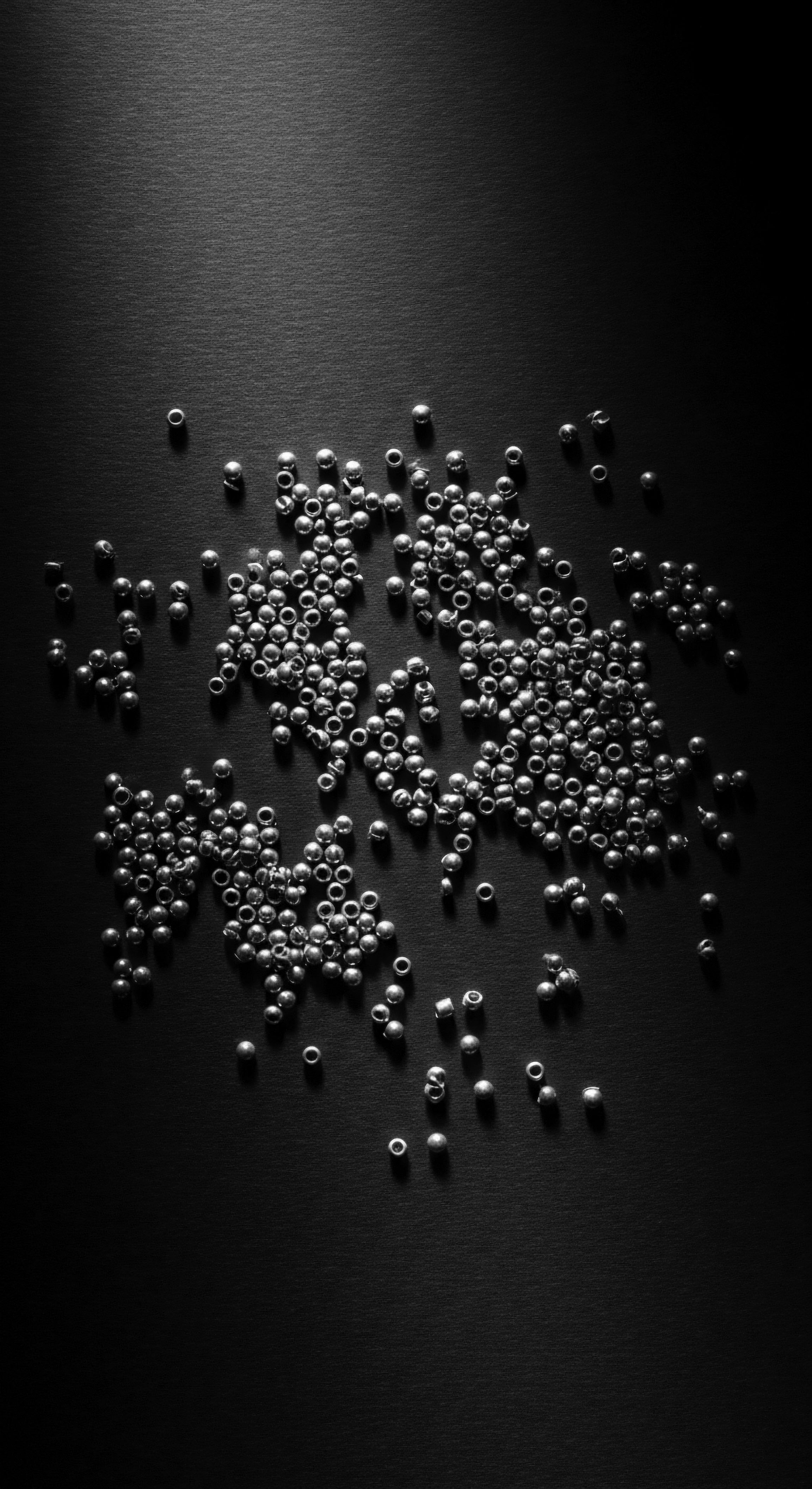
A Study in Sustained Use ❉ The Shea Butter Legacy
One of the most compelling examples of a historical connection between plant oils and textured hair lies in the enduring legacy of Shea Butter (Vitellaria paradoxa). This creamy, pale yellow fat, extracted from the nuts of the shea tree indigenous to West Africa, has served as a cornerstone of hair and skin care for millennia across numerous ethnic groups. Its historical significance is not merely anecdotal; archaeological evidence suggests its use in ancient Egypt, and documented trade routes confirm its importance as early as the 14th century (Healthline, 2018; Mensah, 2022).
Cleopatra herself, it is said, may have relied on shea butter for her beauty regimen (Dr. Axe, 2022).
For women with highly coiled and textured hair in West African communities, shea butter was (and remains) an indispensable part of their hair care practices. Its solid yet easily melting consistency allowed it to be massaged into hair and scalp, providing unparalleled moisture and protection from the harsh, dry climate (Holy Curls, 2021; Cécred, 2025). The traditional method of processing shea nuts into butter is a multi-step, often communal, and labor-intensive process, largely undertaken by women. This process involves crushing, roasting, grinding, kneading, and boiling the nuts to separate the butter, a ritual that has been passed down orally and through practice for generations (Clarins, 2020).
The cultural significance transcends its functional benefits. The shea tree, known as the “karite tree” or “tree of life,” is revered (Healthline, 2018). The communal production of its butter serves as a powerful symbol of women’s economic autonomy and collective knowledge (Mensah, 2022). Applied to hair, it helped seal in moisture, reduce breakage, and impart a healthy luster (Holy Curls, 2021; Dr.
Axe, 2022). This sustained, multi-century use provides a tangible example of plant oils as more than products; they are living extensions of heritage, economic livelihood, and communal identity for those with textured hair.
A Specific Historical Account ❉ Accounts from early European explorers and traders in West Africa describe shea butter as a valuable commodity and a key element in the daily lives of the local populations. For instance, explorer Mungo Park, in his late 18th-century travels through West Africa, documented the widespread cultivation of the shea tree and the processing of its butter, noting its extensive use for cooking, medicine, and cosmetics, including hair care (Park, 1799). This historical observation affirms the deep societal integration of shea butter, confirming its enduring presence in hair practices well before modern cosmetic industries discovered its value.

Reflection
As we gaze upon the intricate spirals and resilient bends of textured hair, we do not merely see strands; we behold a living archive, a continuous unfolding of ancestral wisdom. The historical connection plant oils hold for textured hair is more than a list of ingredients or practices; it is a profound meditation on memory, on adaptability, and on the quiet power of self-care passed through countless hands. From the communal grinding of shea nuts under an African sun to the ingenious use of scarce resources in the diaspora, plant oils have been a consistent, comforting presence. They are the liquid gold that whispers tales of resilience, of beauty cultivated in adversity, and of identity asserted in every carefully oiled coil.
This connection reminds us that hair care, for Black and mixed-race communities, has always been a conversation between the body, the earth, and the spirit. Each application of oil, whether a vibrant yellow palm oil or a creamy white shea butter, is an act of communion, a tangible link to those who came before. It is a testament to the fact that long before laboratories isolated compounds or marketing campaigns lauded ‘miracle’ ingredients, our ancestors possessed a deep, intuitive science—a ‘Soul of a Strand’ understanding—that recognized the profound ability of plant oils to nourish, protect, and celebrate textured hair in all its glory. This heritage is not static; it lives within us, inviting us to honor the past while shaping a future where every textured coil is seen, respected, and tended with the ancient love it deserves.

References
- Clarins. (2020). Shea Butter Benefits. Retrieved from Clarins website.
- Dr. Axe. (2022). Shea Butter for Hair Improves Hydration and Texture. Retrieved from Dr. Axe website.
- Egyptra Travel Services. (2025). From Ancient Egypt to Modern Beauty ❉ Timeless Cosmetic Secrets. Retrieved from Egyptra Travel Services website.
- ELLE. (2020). A Brief History Of Black Hair Rituals. Retrieved from ELLE website.
- Global Beauty Secrets. (2022). Egyptian Honey and Castor Hair Oil. Retrieved from Global Beauty Secrets website.
- Healthline. (2018). Shea Butter for Hair ❉ Raw, Hair Growth, and Natural Hair. Retrieved from Healthline website.
- Holy Curls. (2021). 5 ways shea butter helps curly hair. Retrieved from Holy Curls website.
- India Today. (2025). Do essential oils really help with hair growth? Expert explains. Retrieved from India Today website.
- MDPI. (2023). Cosmetopoeia of African Plants in Hair Treatment and Care ❉ Topical Nutrition and the Antidiabetic Connection? Retrieved from MDPI website.
- Mensah, J. K. (2022). The Shea Butter Handbook ❉ Production, Properties, and Uses. Academic Press.
- Naturally Balmy. (2023). Kukui Nut Oil. Retrieved from Naturally Balmy website.
- O&3. (2024). Baobab Oil ❉ Blending Tradition with Modern Beauty. Retrieved from O&3 website.
- Odele Beauty. (2021). 6 Things Everyone Should Know About Black Hair History. Retrieved from Odele Beauty website.
- Omez Beauty Products. (2024). The Cultural Significance of Natural Hair. Retrieved from Omez Beauty Products website.
- Park, M. (1799). Travels in the Interior Districts of Africa ❉ Performed in the Years 1795, 1796, and 1797. London ❉ W. Bulmer and Co. for the Author.
- Prose. (2022). Best Ingredients for Hair ❉ Baobab Oil. Retrieved from Prose website.
- Reddit. (2021). No raw oils and butters vs. Traditional African hair care? ❉ r/Naturalhair. Retrieved from Reddit.
- Sally Beauty. (2023). The Mane Choice Ancient Egyptian Anti-Breakage & Repair Antidote Repair Oil. Retrieved from Sally Beauty website.
- Salford Students’ Union. (2024). The Remarkable History Behind Black Hairstyles. Retrieved from Salford Students’ Union website.
- Sellox Blog. (2021). Ancient African Hair Growth Secrets For Healthy Hair. Retrieved from Sellox Blog.
- Sister Sky. (2023). Natural Oils Native Americans used for Long, Healthy, and Soft Hair. Retrieved from Sister Sky website.
- Timeless Beauty Secrets. (2023). Native American Jojoba Oil Hair Serum. Retrieved from Timeless Beauty Secrets website.
- YouTube. (2025). I Tried a 4,000-Year-Old Egyptian Hair Mask—Here’s What Happened. Retrieved from YouTube.
- Cécred. (2025). Understanding Hair Oiling ❉ History, Benefits & More. Retrieved from Cécred website.
- ACS Publications. (2024). A Comprehensive Review of Plant-Based Cosmetic Oils (Virgin Coconut Oil, Olive Oil, Argan Oil, and Jojoba Oil) ❉ Chemical and Biological Properties and Their Cosmeceutical Applications. Retrieved from ACS Publications.
- Afriklens. (2023). The Ultimate Guide to Nurturing African Curly Hair ❉ Top Oils for Radiant Locks. Retrieved from Afriklens.
- Afriklens. (2024). Natural African Haircare ❉ Celebrating the Afro and Braids. Retrieved from Afriklens.
- ARgENTUM. (2023). Kukui Nut Oil ❉ it’s uses and benefits for skin and hair. Retrieved from ARgENTUM.
- Cécred. (2025). Understanding Hair Oiling ❉ History, Benefits & More. Retrieved from Cécred.
